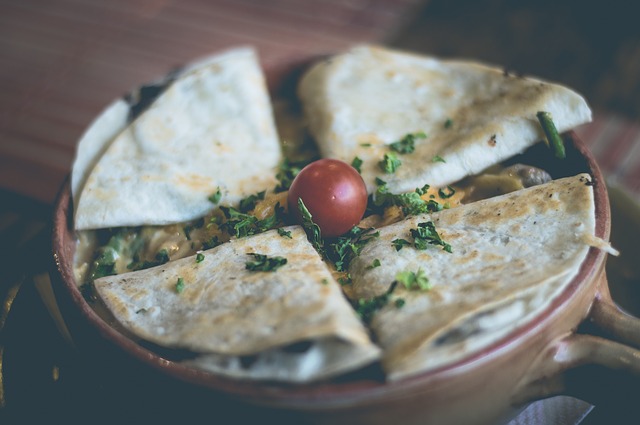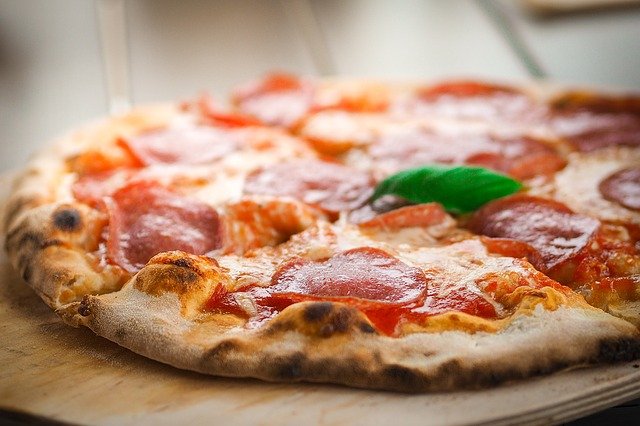Should you buy a food chopper or a food processor? Or, should you go for both?
I have read so many recipes whose authors assume I have a food processor. But you may never have needed one, and, instead, you wanted a simple food chopper. This guide is a complete food processor vs food chopper comparison to help you save money by buying exactly what you need.
Read on to learn more.
What is a Food Processor?
A food processor comes in handy when you need a versatile food preparation solution. The countertop device combines different standard kitchen operations such as cutting and grinding vegetables, kneading dough, whipping eggs, and juicing among others.
To do that, the food processor sports a removable base with one or several removable blades and a host of attachments. The attachments include slicing discs, grading discs, an interlocking lid, a kneading hook, and a feeding tube.
Unlike food choppers, food processors are large, and you can only use them on the countertop. At first, it can be challenging to operate the device. They feature a rubber stopper and a few buttons on their front side for easy operation.
Key Features and Benefits
Food processors come in different sizes and features. Most have a feed tube through which you add ingredients as you mix. There is also a removable food bowl that sits on a large motor base. In some models, the motor unit and the bowl can be large and bulky and weigh several hundred pounds.
Most units also feature a large storage container where you can stuff all the attachments for safekeeping. This also makes it easy for you to access the accessories you need quickly. Other features and attachments include:
- Blades – Standard food processor blades include a few S-shaped blades and a few discs for slicing, shredding, and grating. Some cheaper models come with plastic blades and a metal insert that you can swap as you need. Other models have an adjustable blade whose thickness you can vary as you please.
- Whisk – This is for egg whites and cream. It comes as a paddle/beater or an emulsifying disk.
- Citrus Press – For those who love juicing, the press allows you to press grapefruits, oranges, lemons, and many more.
- Blender – Instead of buying a separate blender, you can get a food processor with a blender. When present, the blender replaces the food processor bowl. Some units only have a blending tool that you can fit in the processor bowl.
The functionality of a food processor depends on the model you choose.
What is a Food Processor Used For?
A food processor does so many kitchen food processing tasks. You can use it to:
- Grind meat
- Chopping, slicing, shredding, and grating vegetables, fruits, and cheese
- Making salads and dressings
- Making sauces or dips
- Making dough
- Making nut butter
- Making crumbs
To do the above, you will need to change the blades and other attachments to make the processor functional.
How to Choose the Best Food Processor
Once you learn the difference between a food processor and a chopper, and you decide it’s a food processor for you, you will need to buy the best affordable. Below are some factors to consider:
- Manual Food Processor vs Electric – A manual processor is ideal for your RV and for use outside your home. Electric processors are convenient and easy to use, especially for children, the elderly, and people with arthritis. Most manual food processors do not require too much effort to use.
- Type of Blades and Other Attachments – Attachments determine what you can do with a food processor with some models having more than others. Stainless steel blades and other attachments are better than plastic ones with a metal insert. These blades resist rust and corrosion, making them ideal when you need to process watery foods such as tomatoes.
Stainless steel blades and discs are also durable and safe for use with foods. For other attachments such as a blender bowl, choose high-quality glass or BPA-free plastic. - Capacity – Food processors allow you to process twelve or more cups of food at a time. The capacity of these units is in liters with most large units processing up to two liters of food at a time and smaller ones processing up to 1.3 liters. Note that the indicated capacity refers to dry ingredients as liquids can only be processed at half the capacity to ensure they do not leak.
- Dishwasher-Friendly – With all the attachments and bowls to clean, you need a food processor that is easy to clean. Choose a model with dishwasher-safe parts.
What is a Food Chopper?
Is a mini chopper the same as a food processor? These two devices have so many features in common, but a food chopper is smaller, less powerful, and misses most of the features of a food processor. It comes with the relevant nozzles and attachments for crushing foods such as cheese and nuts and preparing small volumes of food.
A food chopper sports a bowl that carries about a liter or less of dry foods and a motor unit. There is an engine at the top of the chopper that is easy to use. The chopper kit comes with a knife, graters, and an emulsion nozzle.
Unlike a processor, there is no feeding tube on a chopper, and you have to open the bowl lid to add food. Again, most of these units do not have a blender, and you have to buy one separately. However, they are advantageous when you need a compact, fast, and usable food preparation device.
Food choppers can be manual, plug-in electric, or battery-operated. The latter makes the chopper heavy but is convenient where there is no electric power.
Key Features and Benefits
Most food choppers sport a simple clear plastic mixing bowl, a chopping blade, a blunt blade for kneading dough, a safety lock, and a plastic food pusher. Some allow you to change the blades and mixing bowl while others have a single bowl for all uses.
Other features on choppers include:
- Variable Speed Setting – This is a feature also available in food processors. Here, you can vary the speed settings, depending on the food you need to chop.
- Fixed Blades – Instead of removable blades like in a food processor, the chopper sports several sharp fixed blades. Blades in most models are stainless steel for durability and edge retention. These blades are ideal for small routine tasks in the kitchen such as chopping salad ingredients.
- Specialty Choppers – While most choppers are versatile for different vegetables, fruits, and other foods, some are designed for specific foods. These sport a different design and unique features to chop the specified foods. They include lettuce cutters, pineapple corers, and onion cutters among others.
What is a Food Chopper Used For?
You can use a food chopper when you need chopped, minced, or diced ingredients. Different models have different functionalities, and you need to read the manual before inserting any food into the chopper. Most units only chop soft foods such as fruits and vegetables as hard foods can bend or damage the blades.
Common uses of food choppers include:
- Chopping foods such as garlic, onions, celery, and carrots for soups, stews, and salads
- Dicing herbs for sauces and dips
- Making salads, dressings, salsas, and condiments
- Chopping nut
- Making bread crumbs
In general, food choppers have the same function – to chop food coarse or fine.
How to Choose the Best Food Chopper
You can pick specialty food choppers or versatile choppers, depending on your needs. Specialty choppers are more effective in certain tasks, but you might need to buy a lot of these for your kitchen each for a different function. Below are factors to consider when shopping for a chopper:
Manual, Electric, or Battery-Operated
Manual food choppers are more affordable than electric units. They sport a simple hand-slap design that requires you to press or slap to force the blades down. Some come with a turning mechanism, a pull cord, or a lever press, with the most basic sporting a serrated metal ring.
Electric models have more resemblance to a food processors, but they are smaller and more specialized in what they do. They are more expensive than manual units but more convenient as electricity spins the blades. Some run on battery, which makes them convenient when using them outside the home, but these are relatively bulky.
Size and Weight
Food choppers can accommodate up to four cups of food at a time – up to a liter of dry food. Most are small and portable, and you can choose based on the countertop space you have available. A chopper that holds three or more cups of chopped food is considered large capacity.
Note that some units can hold as little as a few tablespoons of food.
Ease of Cleaning
Choose a chopper that is dishwasher safe for ease of cleaning. Again, you can pick a unit whose parts are easy to remove and clean. A chopper used in the kitchen should also have stainless steel blades and other easy-to-clean materials.
Summary
Should you go for a food chopper or food processor?
If you always hold parties, cook for a large family, or try out different recipes often, you need a food processor. If you have a small, two or three-person family, and you never experiment with different recipes, you need a food chopper. A food chopper is also convenient if you travel a lot and need to make simple meals when away from home.
Full-size food processors are ideal when you need one appliance that does it all. Instead of buying a food chopper and then buying blenders and slicers among other kitchen equipment, you can buy a processor, which replaces all the others.


